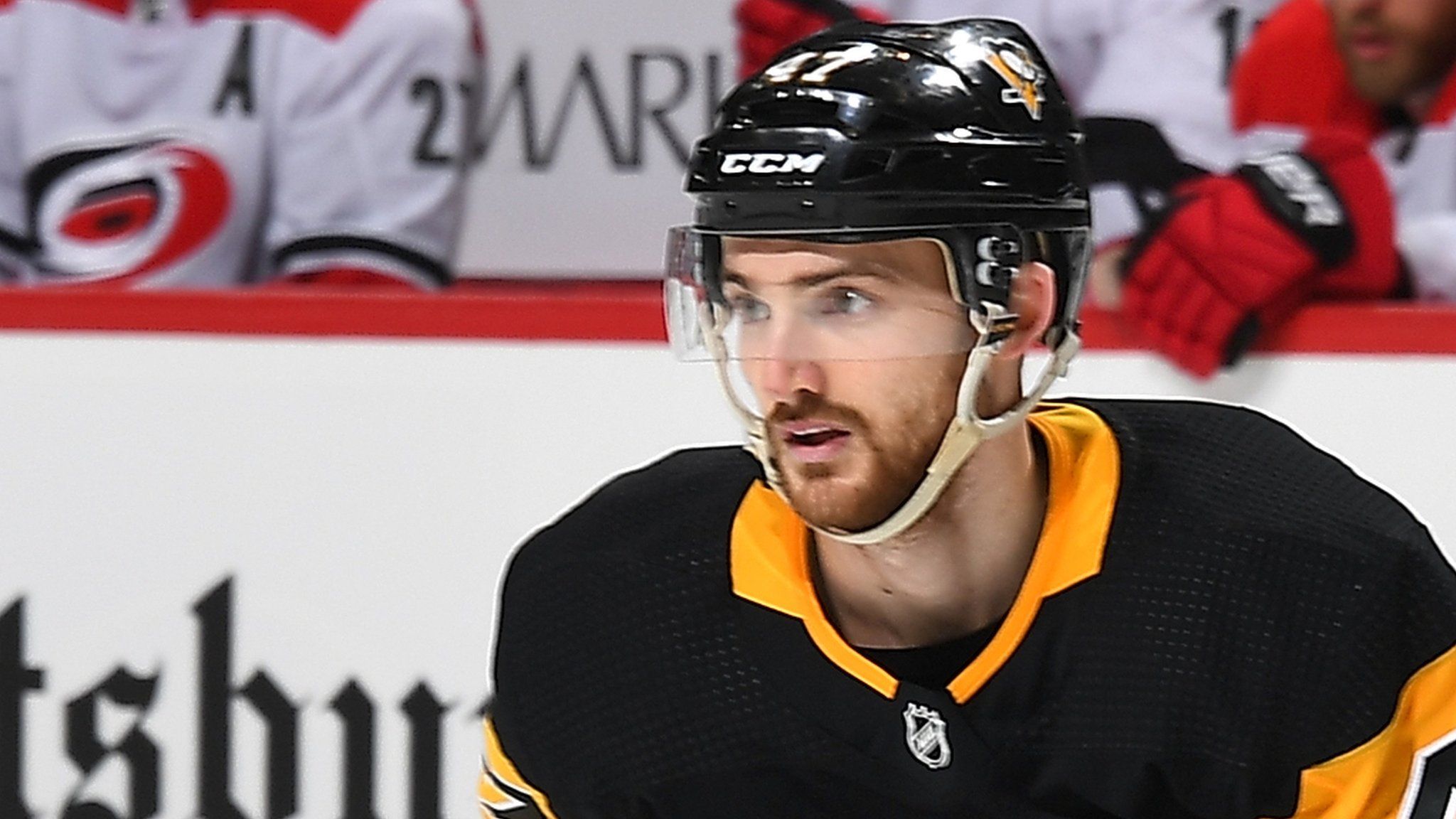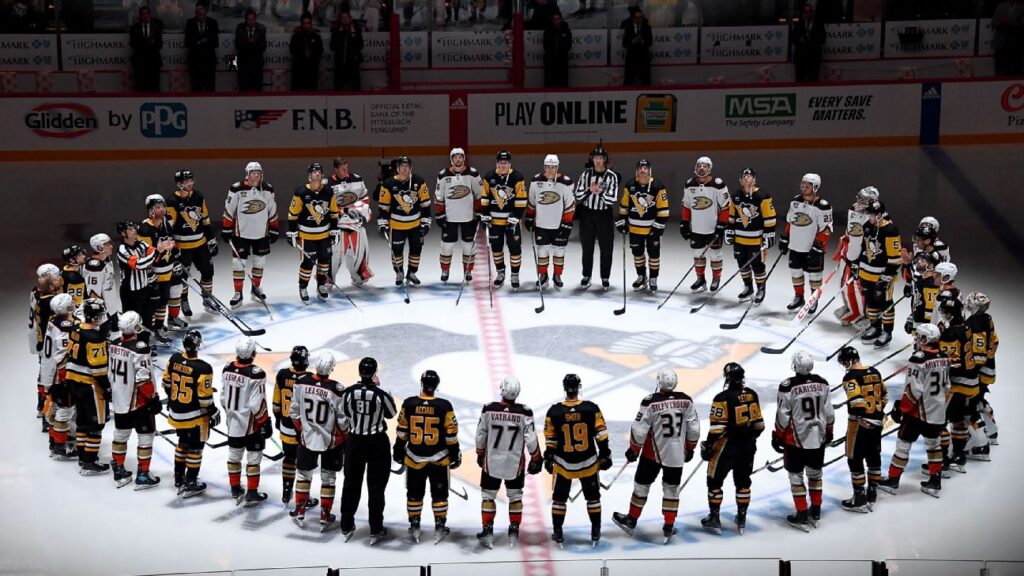Since Adam Johnson’s tragic death in a ‘freak accident’ on the rink last week, all eyes have been on ice hockey.
Johnson, a Nottingham Panthers player, died after being hurt during a game against the Sheffield Steelers on October 28.
During the derby match, which drew over 8,000 spectators, opposing player Matt Petgrave accidently sliced the Minnesota-born athlete in the neck.
An inquest into the 29-year-old’s death has been begun, however South Yorkshire Police have stated that the probe ‘is likely to take some time

Sporting fans called for further safety measures to be brought in, with ice hockey officials urged to bring in neck guards to prevent further horror incidents in the future.
Czechoslovakian star Richard Zednik suffered a similar injury in 2008, but managed to survive despite losing five pints of blood.
Despite pressure from fans and other skaters, the UK’s top ice hockey division said it will not make neck guards compulsory.
The English Ice Hockey Association (EIHA) previously said the safety gear would be mandatory from 2024 onwards.
However, this will not impact the Elite Ice Hockey League (EIHL), which is a separate entity that is not under its jurisdiction.
Although the EIHL ‘strongly encourage’ the use of neck guards, it is not bringing in a rule making them mandatory.
Current rules state that ice hockey players do not have to use neck guards after they turn 18.
A spokesperson for the EIHL said: “We are devastated by the loss of Adam’s life, and our thoughts remain with his family, team-mates and everyone else affected during this difficult time.
“Player safety and welfare is our top priority and we work with players, officials, clubs, and the relevant authorities to review research and advice to understand how we continually enhance the safety of our sport.
“All clubs continue to follow the existing guidance from the International Ice Hockey Federation, that the use of a BNQ or other ISO Standard neck laceration protector is recommended.
“The Elite Ice Hockey League strongly encourages players and officials to wear one and clubs and the League will continue to support players and officials to do so.”


